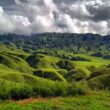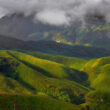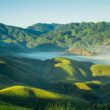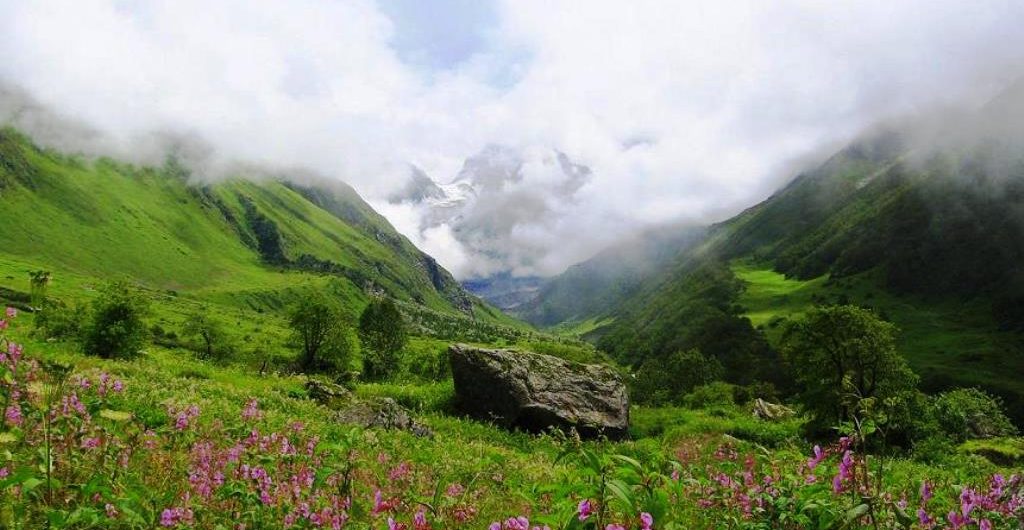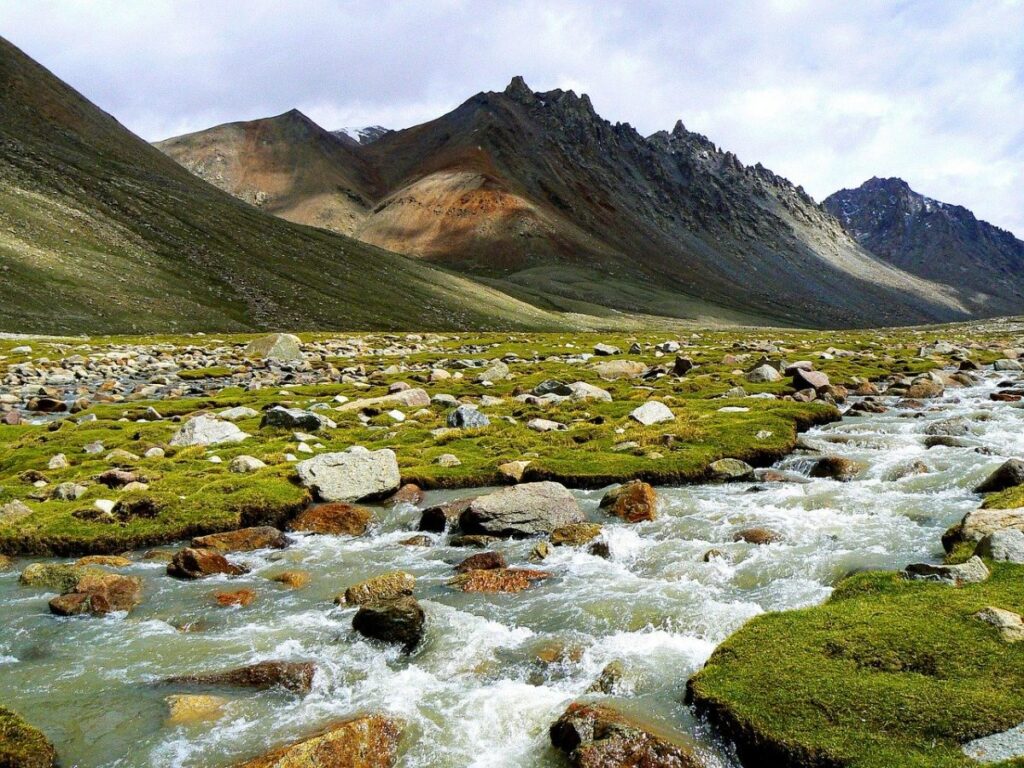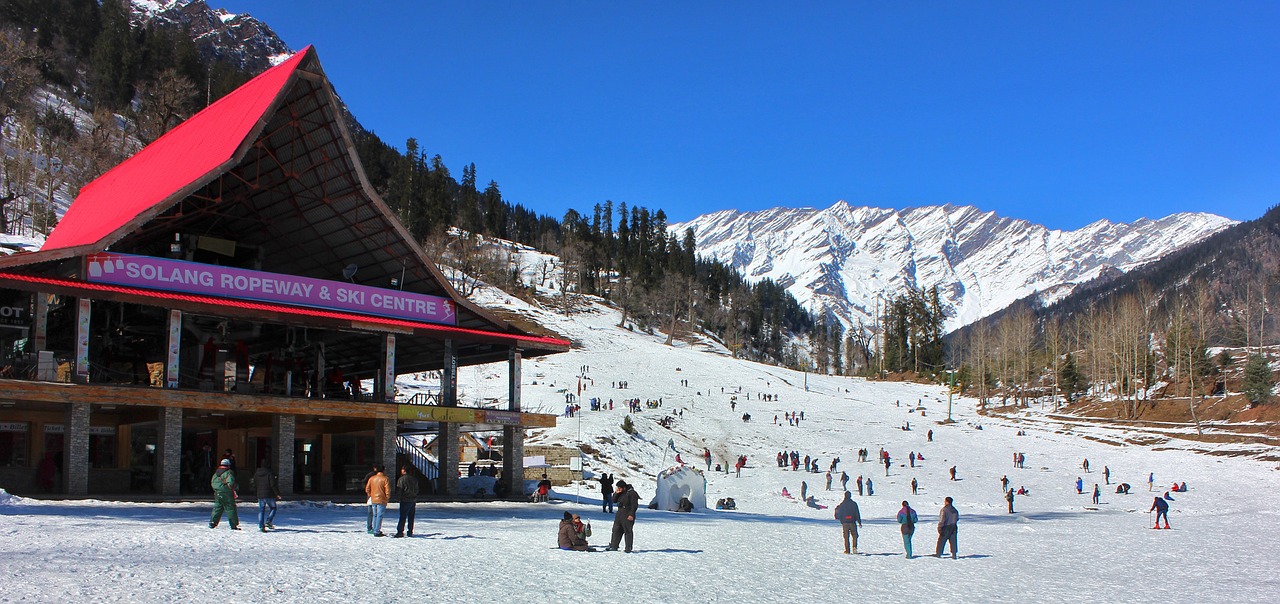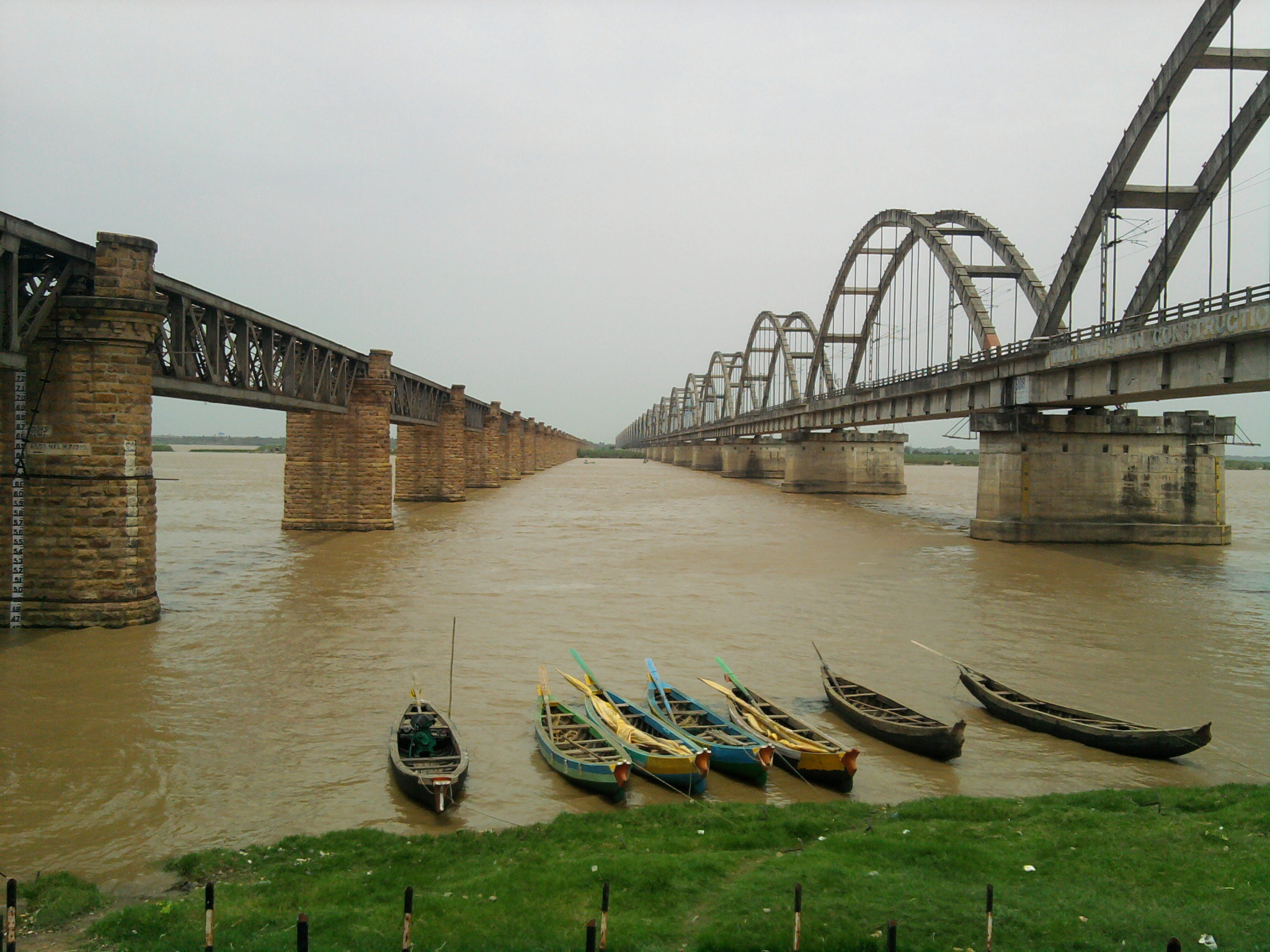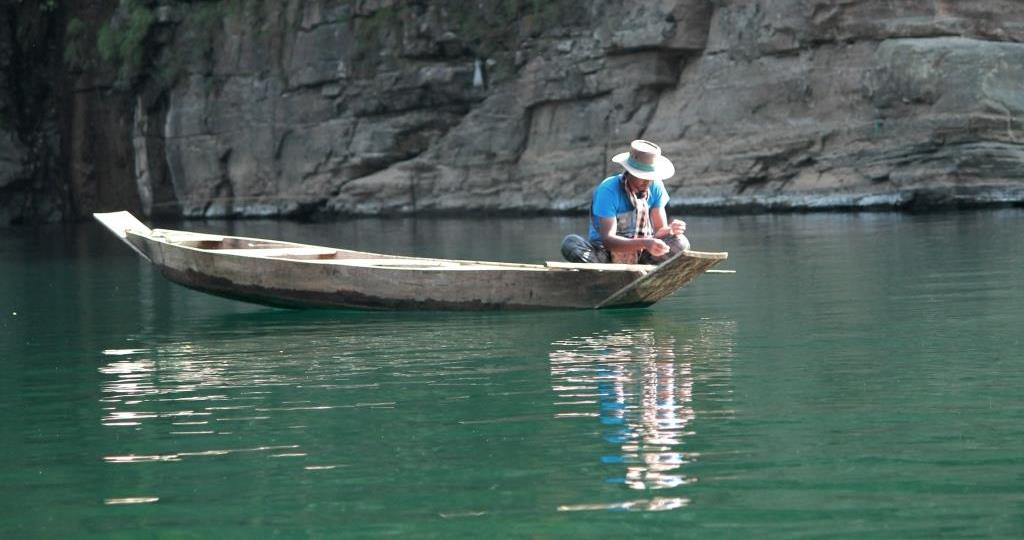VALLEY OF FLOWERS & HEMKUND SAHIB
Valley of Flowers
VALLEY OF FLOWERS & HEMKUND SAHIB – Triumphant from his successful assault on the Mount Kamet (25,447 feet) in the Garhwal Himalaya, in 1931, British mountaineer Frank S. Smythe, along with his five climbing companions, headed back to civilization via the Bhyundar Pass, planning along the way to explore the gorgeous setting of the Alakananda and Gangotri Rivers, twin tributaries of the holy Ganga. Advancing through the cold, rain-driven pass into the warmer Bhyundar Valley the contingent found themselves gazing down upon rocky terraces clotted with flowers every which ways — primulas and more primulas, of the densest blue and huge.
Descending further the land opened out upon a vast meadow — a tapestry of violets and marigolds, wild rose and nomo Charis, delphiniums and anemones, blue corydalis and asters seeking purchase on soil and even running water — an endless sea of nodding heads lifting their heads to the sky — all filling the silken breezes with their heady scents. Valley of Flowers and Hemkund Sahib – Nature at it’s best. Completely blown away by this heavenly encounter, Smythe and his companions, broke journey and camped here for two days, the sound of the Pushpawati stream a soothing lullaby, amidst this unexpected windfall of floral wealth from the gods.
Back in England, in 1937 Smythe, jumped at the offer to return to the hidden Bhyundar Valley for a botanical tour to collect and bring back seeds and specimens. Smythe’s evocative account of his wanderings in this pristine vale, during which he recorded over 269 species, plus 29 new ones he came upon, opened up to the world one of the Garhwal’s most precious secrets. And ever since, the world has known it as ‘The Valley of Flowers’, so christened by Frank Smythe in his astonishing book of the same name.
One of the most magical celebrations of India’s legendary monsoon was a secret that the Garhwal Himalaya kept close to its heart for a long, long time. Even gossipy local folk and itinerant herdsmen, driven by superstition and too afraid to enter the Bhyundar Valley breathed nary a word to the outside world about the presence of this hidden valley, folded away in the verdant mountains. When the life-giving rains come—they paint a fabulous canvas— a riot of colors and heady scents in Frank Smythe’s ‘Valley of Flowers’.
Trekkers, so many of them, slipping into this bountiful floral meadow couldn’t explain more succinctly what they encountered than the man who willingly shared his secret and lured so many with his lovely vision of the valley he stumbled upon purely by accident —“the wonders of this valley are its flowering plants. You find here different branches of the same plant yielding flowers of different colors and varying fragrances. All these coupled with the fauna combine to make a superb and harmonious ensemble”.
Things To Be Kept In Mind Before Planning A Visit
1. Medical Certificate: If you are up for a trek, carry a coronavirus negative certificate issued. Failure of the same will result in being quarantined for seven days.
2. Connectivity: The 38 km trek starts from Govindghat and is 11 hours drive from Rishikesh. The closest airport is Dehradun which is currently open for the public to fly down from various cities – Delhi, Kolkata, Hyderabad, Mumbai, Bengaluru, Chennai, and Ahmedabad.
3. Safety & Security: Carry basic requirements ensuring a safer ambiance for you such as hand sanitizers, masks, disinfectants, etc.
According to the reports, the Valley of Flowers welcomes a large number of tourists every year. With the opening of this popular attraction, there are speculations of the significant improvement in the state tourism industry.
Hemkund Sahib
Hemkund Sahib, located at the glacial heights of Lokpal or Hemkund Lake surrounded by snow peaks, in a parallel valley to the Valley of Flowers. It is one of the holiest places for the Sikh community. The mountainous trail that snakes out from Ghangaria is filled with the shouts of Sat Sri Akal, from the jathas (huge groups of Sikh pilgrims) who come from not only different parts of India but abroad as well. Alongside walk Hindu pilgrims heading for the shrine, consecrated to Lakshman, the brother of Lord Rama, located in close proximity to the Sikh gurdwara.
In the revered Bachitar Natak, an autobiography of sorts of the 10th Guru of the Sikh community, Guru Gobind Singh reveals that he had meditated on the shores of the glacial lake surrounded by seven snowy peaks (Saptshring) in a previous birth. A Sikh soldier traveling these parts in 1930, ascribed this area to the guru’s revelations and the subsequent setting up of the gurdwara created one of the holiest pilgrim points for the Sikh community. The Hemkund gurdwara is shaped like Brahma kamal, for which the area is famous, along with the Himalayan blue poppy.
The waters of Pushpavati River and the Laxman Ganga from Lokpal (Hemkund) Lake which come together at Ghangharia create the Bhyundar River. Crossing the river you will encounter two trails at a point known as Pandukeshwar, slipping away into the mountains — the less frequented one goes to the Valley of Flowers, the pilgrim- encrusted one leads to Gurdwara Sri Hemkunt Sahib (14,203 feet) ruminating by the glacial Lokpal Lake which is fed by the snowmelt from the glaciers snaking down from the Hathi Parvat and Saptshring (7 snowy) peaks.
Within the gurdwara, the holy Guru Granth Sahib is housed under an ornamental canopy. The ritual devotions, a parikrama of the shrine, meditation, and Kar Seva in these pristine environs take on a whole new meaning at this much-revered site. Temperatures of the lake are hyperthermia-inducing so you might not want that traditional dip in the Sarovar for more than 20 seconds.
Long before the setting up of the gurdwara, the Hindu community residing around these mountains held the lake in deep veneration. The Hindu shrine located by the lake is consecrated to Lakshman. Legend has it that Lakshman, Lord Ram’s younger brother meditated here and spent time here recovering from a fatal wound given to him by the demon Meghnath. Lord Hanuman, it is said, found the herb sanjeevani, in the nearby Valley of Flowers, which saved Lakshman.
You need to leave Ghangaria at dawn because you must start your return from the gurdwara by 3-4 pm as there is no accommodation option there or along the way. The trek to the shrine takes about 4-6hrs depending on how to fit and inspired you are by the urgings of your fellow pilgrims shouting Sat Sriakal all the way along the stony trail cutting through the forest and high meadows. The skinny path, also used by pilgrims on mules and dandies can be treacherous and slippery in the rains in July and August, it becomes muddy and treacherous. Sustenance along the way comes from the teashops scattered along the trail. The last 2 km when the track is snow-filled, has to be covered on foot. Hold the rope set along the way and tread cautiously. The shrine is open from June the first (generally) and it’s not uncommon to find pilgrims using the alternate route—a flight of about 1,200 steep stone steps to the gurdwara.
Similar Post – NUBRA VALLEY – THINGS TO DO
Frequently Asked Questions About Trek To Valley Of Flowers
Q. How far is Valley of Flowers from Badrinath?
A. The Valley of Flowers is 25 Kilometres away from Badrinath.
Q. Is Valley of Flowers safe?
A. Yes. Its always safe while traveling in Uttarakhand as the locals are helpful and polite.

